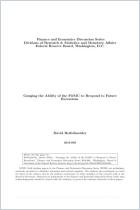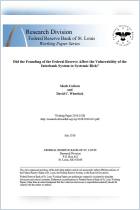加入 getAbstract 阅读摘要

加入 getAbstract 阅读摘要
Andrew Foerster and Sylvain Leduc
Why Is the Fed’s Balance Sheet Still So Big?
FRBSF, 2019
看看什么内容?
After years of loose monetary policy, the Fed still has $4 trillion of assets on its balance sheet.
Recommendation
Federal Reserve officials introduced extraordinary monetary policy measures during the Great Recession and kept at them as the US economy recovered. Most notably, the Fed more than quadrupled the size of its balance sheet. This growth, along with years of low interest rates, provided ample liquidity to markets. In this informative report, economists Andrew Foerster and Sylvain Leduc discuss to what extent the central bank can – or should – reduce its balance sheet. Financial professionals will appreciate this robust examination of Fed policy.
Summary
About the Authors
Andrew Foerster is a research adviser and Sylvain Leduc is executive vice president and director of economic research at the Federal Reserve Bank of San Francisco.


















Comment on this summary